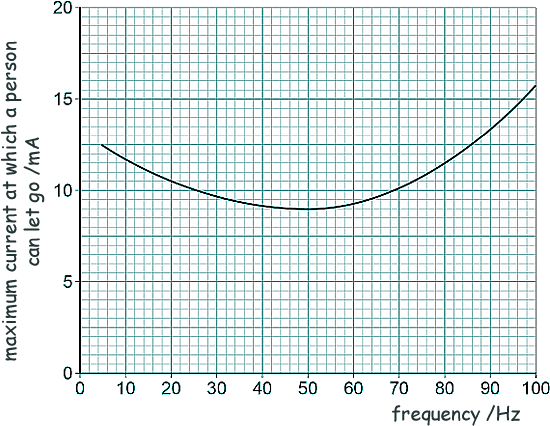GCSE Standard Questions: Electricity in the Home Q16. Here is part of a mains electricity lighting circuit in a house.
(a) A fault in the switch caused a householder to receive a mild electric shock before a safety device switched the circuit off. The mean power transfer to the person was 5.75 W. The potential difference across the person was 230 V. Calculate the resistance of the person. P = IV 5.75 = I × 230 I = 5.75/230 I = 0.025 A V = IR 230 = 0.025 × R R = 230/0.025 R = 9200 Ω [5 marks] (b) An electrician replaced the switch. The electrician would have received an electric shock unless the circuit was disconnected from the mains supply. Explain why. One wire in the switch is live [3 marks]
(c) The current from an electric shock causes a person's muscles to contract. The person cannot let go of the electrical circuit if the current is too high. The graph below shows how the maximum current at which a person can let go depends on the frequency of the electricity supply.
The UK mains frequency is 50 Hz. Explain why it would be safer if the UK mains frequency was not 50 Hz. 50 Hz has the lowest 'let-go' current. [2 marks] (Total 10 marks) |
Follow me...
|







